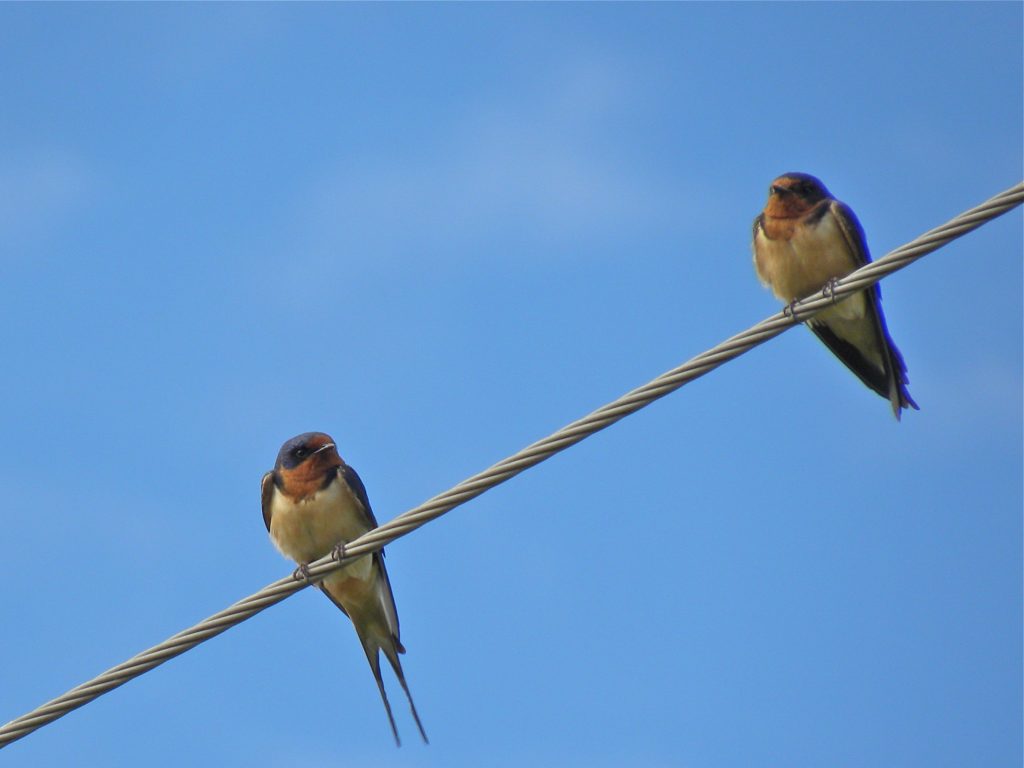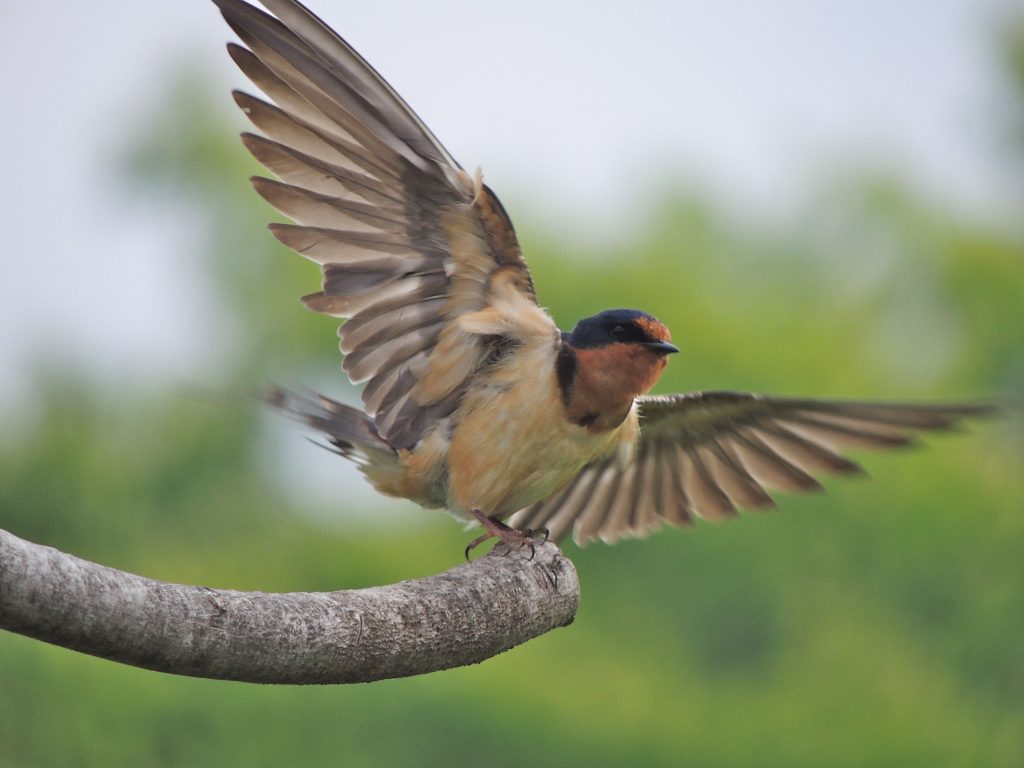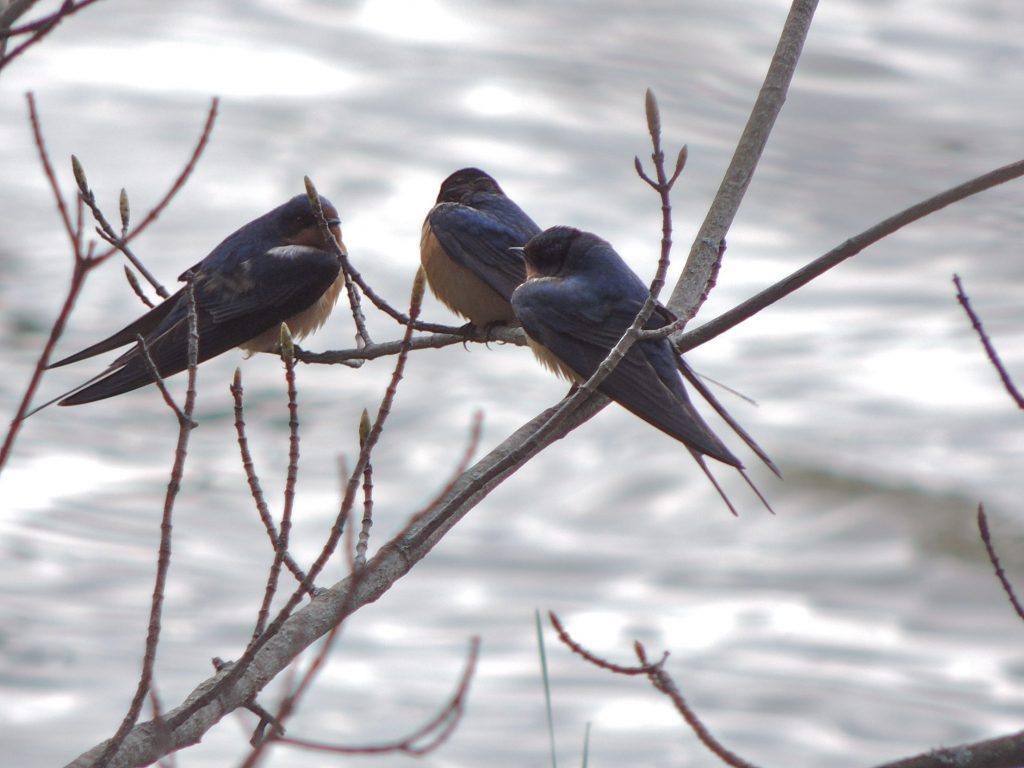July 9, 2016. Flamborough ON. I noticed a small group, perhaps a dozen, Barn Swallows gathered on a utility line today. I thought it was significant even though it doesn’t sound like much of an event, but this was the first sign of summer flocking – and Barn Swallows are beauties at any time. Well, almost first, last night a large flock of Common Grackles flew overhead towards a thick tree where, in past summers, hundreds of grackles and Red-winged Blackbirds have gathered in noisy roosting groups. The point of all this is to note that most of the broods of 2016 are out of the nest, are more or less independent and a collective instinct to gather in pre-migratory flocks has taken hold. It’s a marker denoting a change of season, from spring to summer.

The task of defending a territory is now less important so early mornings of birdsong have faded. The abundance of summer provides what’s needed to prepare for the journey and/or the winter ahead: food to build muscle and fuel reserves, socialization and bonding for safety and navigation, and in some species (Barn Swallows being one) young males get a start on next year by investigating suitable nest sites.
(Things change so quickly, it was just seven weeks ago that a mid-May cold snap had these exhausted and hungry Barn Swallows huddling miserably.)
That’s not to say that all species have finished with spring, many are still raising young. American Goldfinches and Cedar Waxwings time their young broods to coincide with late summer’s abundance of seeds and berries; but they are the exception